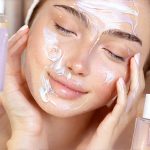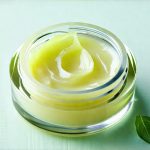Urinary tract infections (UTIs) are unfortunately common, impacting millions annually, and while often associated with hygiene practices, many don’t realize the significant role skincare products can play in their occurrence – or prevention. Certain ingredients found in everyday cleansers, moisturizers, and even makeup can disrupt the delicate balance of the vaginal microbiome, creating an environment where bacteria like E. coli thrive. This isn’t about eliminating all skincare; it’s about making informed choices that prioritize urinary health alongside your skin’s needs. A ‘urinary-safe’ routine doesn’t mean sacrificing self-care or beauty standards – instead, it means understanding how ingredients interact with your body and selecting products accordingly to minimize potential irritation and disruption.
The connection between skincare and UTIs is often overlooked, but the proximity of the perineal area to both the urinary tract and the skin makes this a crucial consideration. Ingredients that are highly irritating or disruptive can travel from the skin’s surface into the urethra, increasing the risk of infection. Furthermore, some ingredients can thin the vaginal lining, compromising its natural defenses against bacteria. This is particularly relevant for individuals prone to recurrent UTIs, those with sensitive skin, and post-menopausal women experiencing changes in estrogen levels that affect vaginal health. Building a urinary-safe skincare routine isn’t about restriction; it’s about empowerment through knowledge and mindful product selection.
Understanding the Culprits: Ingredients to Avoid
Many seemingly harmless ingredients commonly found in skincare can contribute to UTI risk, either directly or indirectly. Harsh sulfates, like Sodium Lauryl Sulfate (SLS) and Sodium Laureth Sulfate (SLES), are notorious for stripping the skin of its natural oils, leading to dryness and irritation. This disruption extends beyond the skin itself; it impacts the surrounding microbiome. Similarly, fragrances – both synthetic and natural – can be highly irritating to sensitive tissues. Even “natural” fragrance blends often contain complex mixtures of chemicals that can cause reactions. Beyond these common offenders, certain preservatives like parabens and formaldehyde-releasing preservatives are increasingly scrutinized for their potential hormone-disrupting effects and possible impact on vaginal health. If you’re looking to support overall urinary wellness through diet, consider how to build a urology-friendly meal routine.
The issue isn’t always about avoiding ingredients altogether, but rather considering where you apply them. A body wash containing SLS might be fine for your arms and legs, but using it consistently in the perineal area is likely to cause problems. The same applies to heavily fragranced lotions or creams applied near the urethra. It’s important to read ingredient lists carefully – becoming a label detective! – and understand what you’re applying to your skin, particularly in sensitive areas. Look for products specifically formulated for sensitive skin, or those labeled “fragrance-free” (be aware that “unscented” doesn’t necessarily mean fragrance-free; it can simply mask the scent with other chemicals). Maintaining a healthy balance also extends to knowing how to naturally support bladder healing after a UTI.
Finally, be mindful of pH levels. The vagina naturally has a slightly acidic pH (between 3.8 and 4.5) which helps protect against harmful bacteria. Using skincare products with a high pH can disrupt this balance, creating an environment where UTIs are more likely to develop. Products marketed as “balancing” or specifically designed for vaginal health often prioritize maintaining the correct pH level.
Building Your Routine: Safe Swaps and Alternatives
Creating a urinary-safe skincare routine isn’t about throwing out everything you own; it’s about making thoughtful swaps and incorporating gentle alternatives. Begin with your cleansers – opt for sulfate-free options specifically designed for sensitive skin. Look for ingredients like coco-glucoside, decyl glucoside, or lauryl glucoside, which are milder surfactants that cleanse effectively without stripping the skin’s natural oils. When it comes to moisturizers, choose fragrance-free formulas with soothing ingredients like shea butter, jojoba oil, and aloe vera. Avoid products containing harsh chemicals or potential irritants.
The same principles apply to intimate hygiene products. If you use feminine washes, select pH-balanced options formulated without fragrances, dyes, or sulfates. Water is often the best cleanser for the vaginal area – avoid douching altogether, as it disrupts the natural microbiome and increases UTI risk. Consider using a dedicated washcloth or soft sponge specifically for that area, and always wipe front to back after using the toilet. Don’t forget about makeup! While less directly related, makeup applied around the perineal area (e.g., during shaving) should also be fragrance-free and hypoallergenic. To learn more about preventative measures, understanding how to prevent a UTI after intercourse is key.
Choosing Intimate Care Products Wisely
Intimate care products require particularly careful consideration because of their direct contact with sensitive tissues. – Avoid douching; it disrupts the vaginal microbiome. – Look for pH-balanced washes specifically designed for intimate use, ideally those containing prebiotics or probiotics to support a healthy bacterial balance. – Consider using plain water as your primary cleansing method. – Opt for fragrance-free and dye-free products whenever possible. Understanding how to keep a symptom diary for UTIs can also help you identify triggers.
When choosing an intimate wash, read the ingredient list closely. Look for ingredients that soothe and nourish rather than those that are harsh or irritating. Ingredients like chamomile, calendula, and tea tree oil (in very low concentrations) can have anti-inflammatory properties. However, be cautious with essential oils, as some can be irritating to sensitive skin. Always patch test a new product on a small area of skin before using it regularly. Remember that even products labeled “natural” or “organic” can contain ingredients that may cause irritation, so thorough label reading is crucial.
Addressing Shaving and Hair Removal
Shaving and other hair removal methods can increase the risk of UTIs if not done carefully. Micro-abrasions created during these processes provide an entry point for bacteria to enter the urethra. To minimize this risk: – Always use a clean, sharp razor. Dull razors require more pressure, increasing the likelihood of nicks and abrasions. – Shave in the direction of hair growth. While shaving against the grain may give a closer shave, it also increases the risk of irritation. – Use a lubricating shaving cream or gel specifically designed for sensitive skin. Avoid products containing fragrances or harsh chemicals.
Consider alternatives to traditional shaving, such as waxing (though this can still cause irritation) or laser hair removal (which offers a longer-term solution). After shaving or other hair removal methods, thoroughly cleanse the area with a gentle, urinary-safe cleanser and apply a soothing moisturizer. Avoid tight clothing that could further irritate the skin.
Supporting Your Vaginal Microbiome
A healthy vaginal microbiome is your first line of defense against UTIs. You can support it through several lifestyle choices: – Stay hydrated by drinking plenty of water to help flush out bacteria. – Consume probiotics, either through fermented foods like yogurt and kefir or through supplements, to promote a healthy gut-skin axis (and indirectly support vaginal health). – Avoid tight-fitting clothing that restricts airflow and traps moisture. Choose breathable fabrics like cotton. – Practice good hygiene habits, including wiping front to back after using the toilet.
Consider incorporating products containing probiotics specifically designed for vaginal health. These can help restore and maintain a healthy bacterial balance. Remember, building a urinary-safe skincare routine is not just about avoiding harmful ingredients; it’s about actively supporting your body’s natural defenses and creating an environment where UTIs are less likely to occur. It’s also crucial to remember that if you experience recurrent UTIs or have concerns about your vaginal health, consult with a healthcare professional for personalized advice and treatment. If you frequently struggle with UTIs, it’s wise to know when you might need a specialist for recurrent UTIs.





















